

- Exclusive offers
- Inspiring new releases
- Personal invitations to Art Events

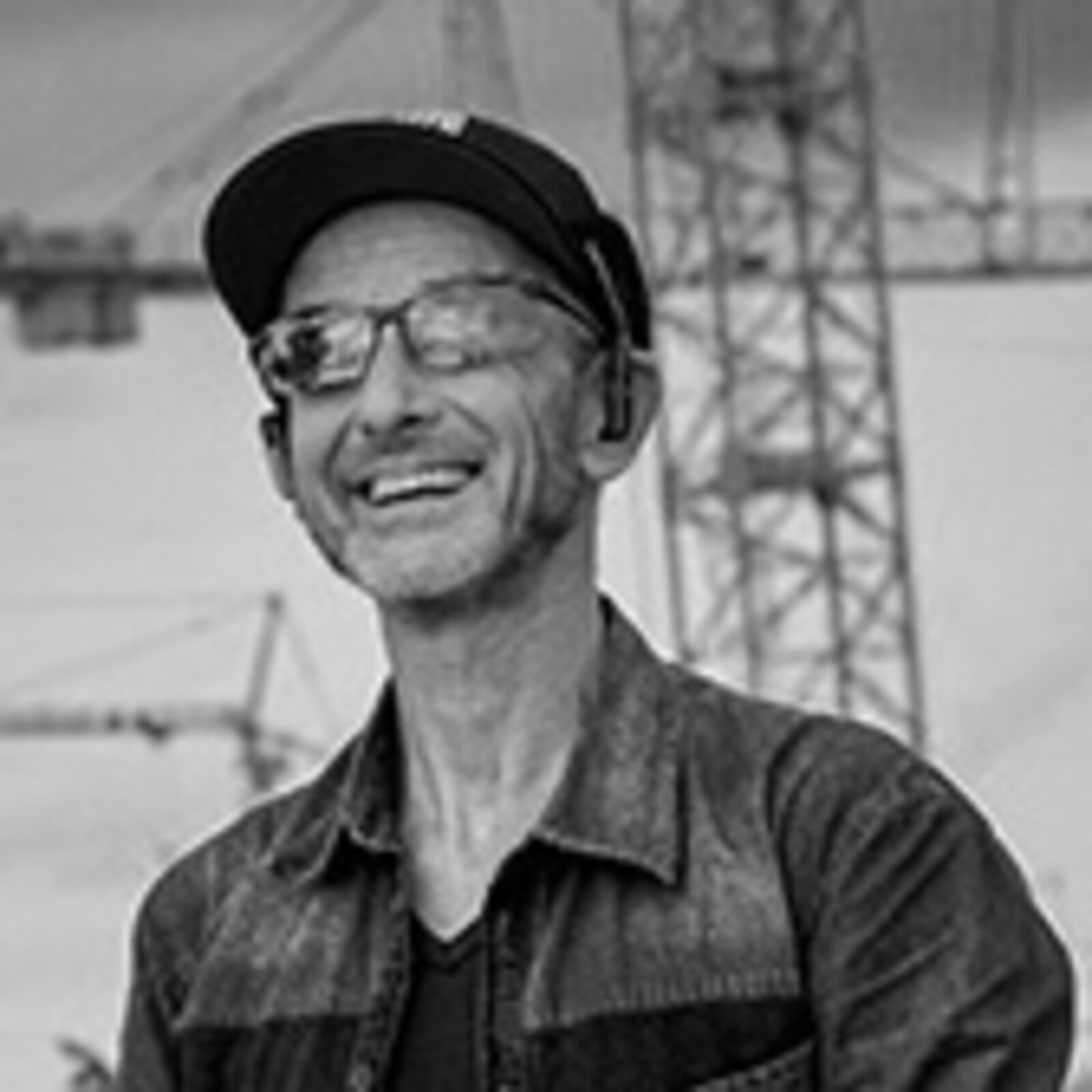
Color SymphonyA distinctive feature of Andrej Barov's work is his ability to fuse concept and emotion, a quality vividly displayed in his latest series. What seems abstract and minimalist at first… Read more
Intro Bio Exhibitions


















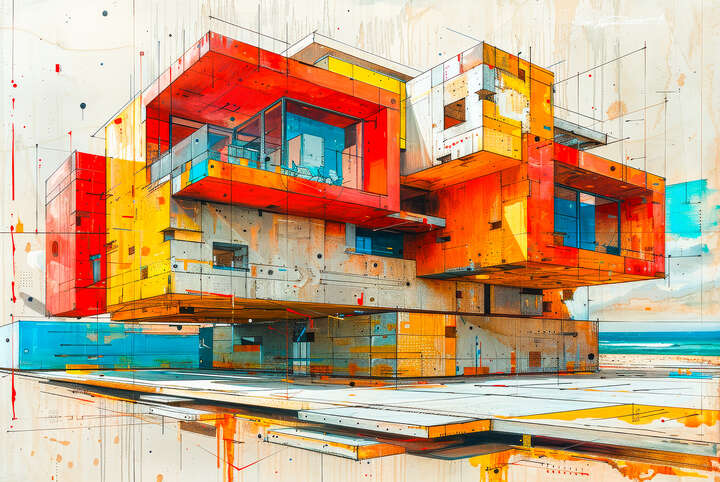
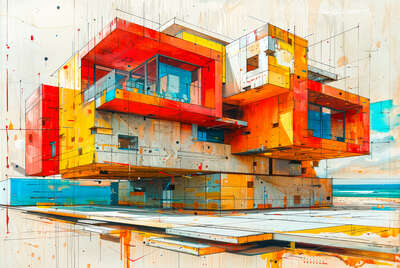
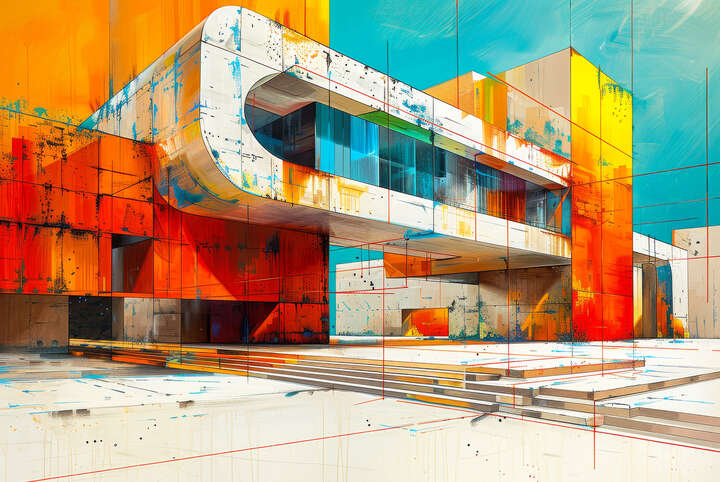

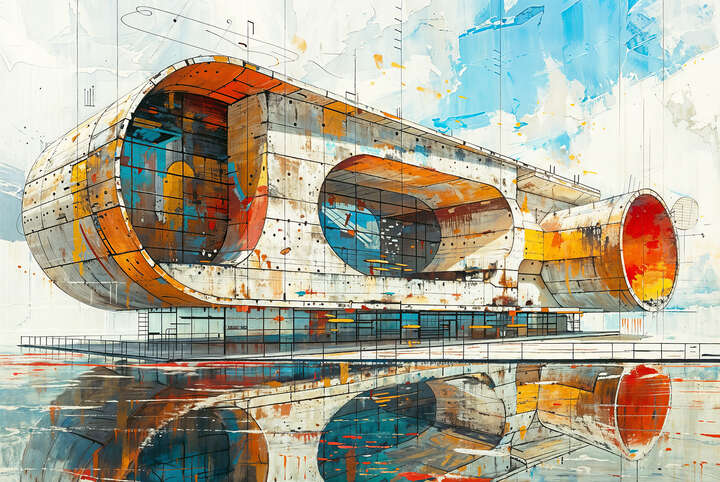
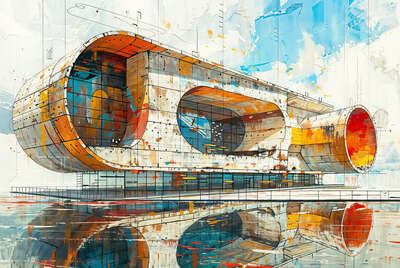
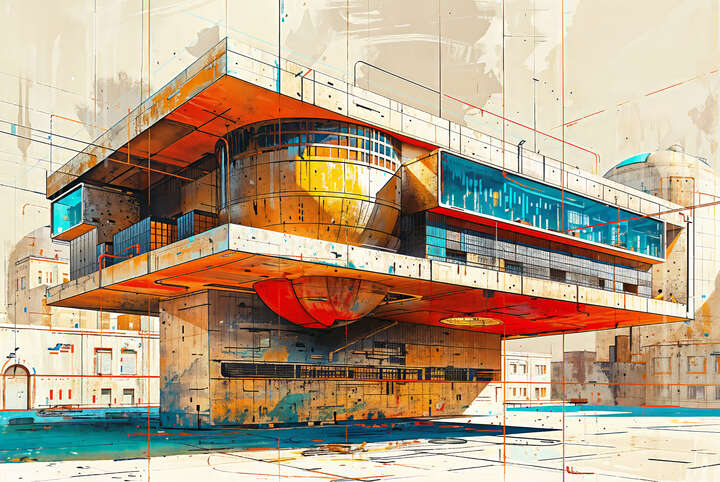
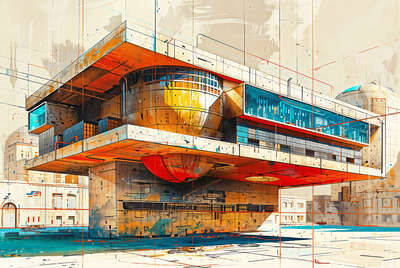
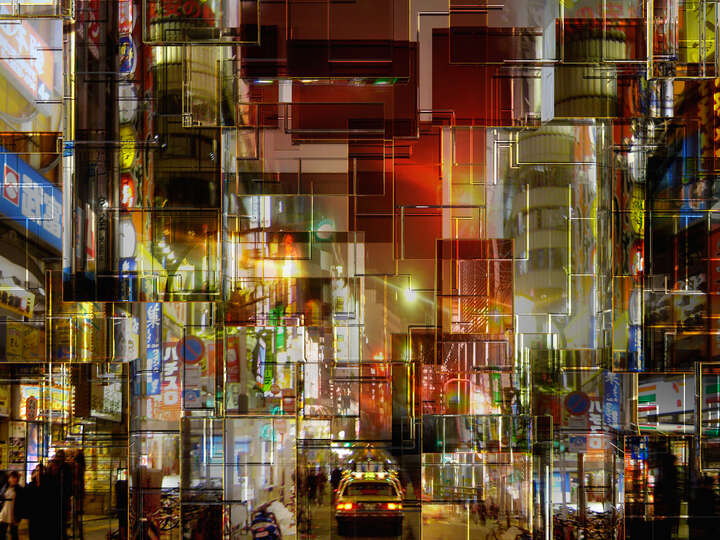
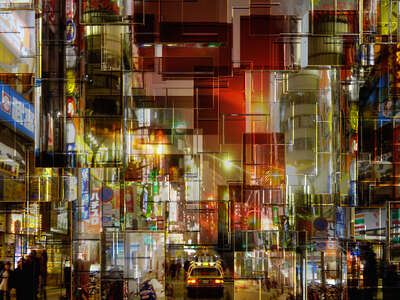
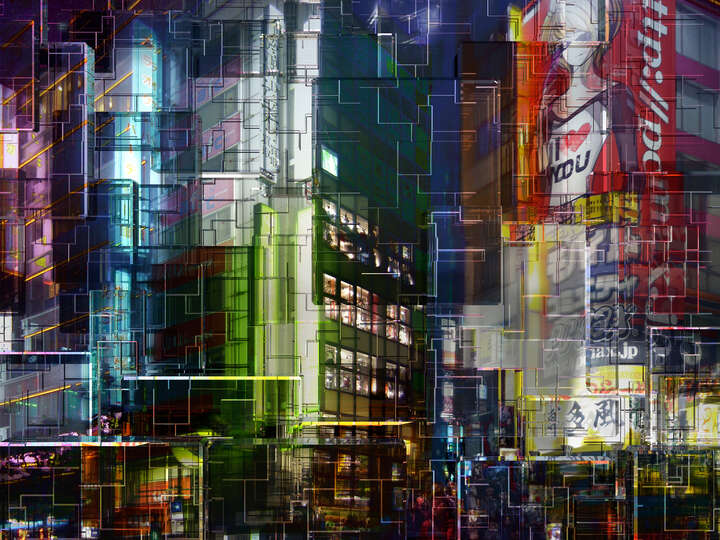

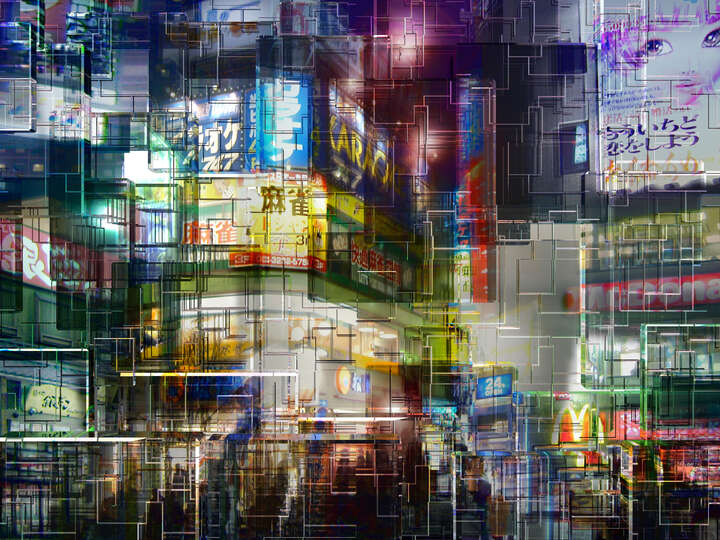
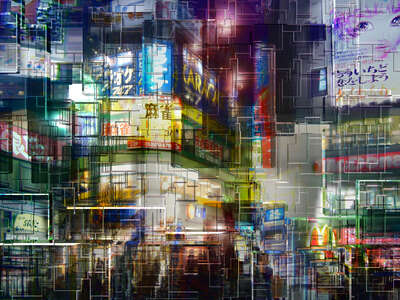
Color Symphony
A distinctive feature of Andrej Barov's work is his ability to fuse concept and emotion, a quality vividly displayed in his latest series. What seems abstract and minimalist at first glance is, in fact, a sophisticated exploration of color. In Color Symphony, Barov transports us into the enigmatic world of gemstones—those shimmering treasures revered for millennia as symbols of wealth, power, and eternity. Through high-resolution photography and digital painting, Barov captures the timeless allure of gemstones and distills it into an abstract visual language. Using advanced digital techniques, he meticulously analyzes the intricate color spectra of these gems, transforming them into tall vertical stripes that offer a profound glimpse into their vibrant essence. Each hue, each stripe, tells a story of the depth and richness concealed within a single gemstone. Barov's use of digital media enables him to extract these colors and craft harmonious compositions that are both monumental and nuanced. The result is an invitation for viewers to immerse themselves in a magical world of color, where the brilliance of gemstones takes center stage.
Urban Fire
In his latest project, Andrej Barov once again showcases his masterful command of color, form, emotion, and concept. Urban Fire captures the dynamic aesthetics and creative chaos of architecture, balancing precision with sensuality. The series reflects the energy inherent in the architectural design process. Through drawings and sketches that blend geometric shapes, Barov explores the path toward visionary modern urban design. His works exude a controlled disorder and spontaneity, aiming to create forms that are both harmonious and innovative. The use of Orange plays a central role, accentuating the artistic essence of the architectural concept and infusing the compositions with a vibrant intensity.
Andrej Barov’s Cubist Cityscapes
The depiction of reality through art almost inevitably carries the question of what the possibilities of depiction are. In modern art, the representative character of an image gives way to the medium of its presentation. Colour and form become independent, living their own lives quite independently of the subject, describing a world of inner emotions.
Andrej Barov seeks his Tokyo pictures to be understood as a reconstruction of our visual memory. “When you are in Japan, you are surrounded by completely different colours. So much is neon and illuminated, it appears almost psychedelic to our eyes.” The Tokyo of Andrej Barov is one of fragmented light impressions, a city of colour, form and structure, a cubist alphabet of concentrated sensations. As with his previous works, Barov uses digital editing to transform the medium of photography into something more like a painting, using the creative potential of art to portray reality as a complex process of internal perception. “I am concerned with the ability of our brain to create a mosaic of visual memories from images and impressions that we have experienced, which then serve as emotional stimulants able to recreate the sensation we had at the time”.
Pixel And Paint Brush
Andrej Barov Project "My favourite films" von 2003-2004
“Leinwand”, or canvas, is a foundation for oil and acrylic paints. However, “leinwand” also means screen and in this sense is the projection screen for film viewing. A sharp divisional line runs between the “foundation” and the “projection screen.” The separated parts are held together as the “Leinwand.” Never before has this barrier appeared to have been violated. Is is too erie to have the foundation as a projection screen; or is the screen not allowed to be a foundation?
There is perhaps a historical contingency for the screen being used at the cinema. The blossoming of psychoanalysis and the expansion of the cinema go by chance hand in hand. However, the cinema is by no means par excellence the medium of projection. On canvas, painted pictures are very much the same, even when they stem from a psychoanalytical, unbiased tradition. On the other hand, the film screen appears as the means of contemporary, reactionary tendencies totally unsuspicious messages. The screen is by no means the symbol of a fallen era, nor a stick-in-the-mud recreation. Through Andrej Barov’s cycle, “My Favourite Films,” these two concepts clearly emerge.
Only once can the entire history of the posture of a figure or the constellation of a tableau of characters be covered in a nutshell. Everyone knows such impessions, which burn into our minds and extinguish an entire memory. They are sediments of an anecdote, projections. The entire universe of a film could be projected onto a canvas. To otheres Andrej Barov does not apply oil or acrylic to the canvas, but with the most modern technique of so-called 3-D animation, elaborately processed digital photography. The pictorial here is not a question of the application of color, but of the composition and the alienation of the illustration. Pixels replace the paint brush; the canvas, however, irrespectively outlasts this headway, if not at all reintegrated, renewed, modernized.
| Andrej Barov (*1958 in Leningrad) is a photographic artist and founder of "Brain Art," a movement that explores visual perception through the lens of the latest findings in neuroscience. After studying theater studies and art history at the Academy of Theater, Music, and Film in Leningrad, and a decade-long engagement with Lenfilm, Barov emigrated to Germany in 1988, where he began focusing intensively on photography. In 1994, he taught at the New Academy of Fine Arts in St. Petersburg. His work, which blends photography with digital painting, is exhibited internationally. Barov currently lives and works in Munich. | |
| 2005 | "Colour Matrix", Andrej Barov, Brian Eno, Sonderausstellung des Museums für Abgüsse Klassischer Bildwerke |
| 2004 | "Perceptions" KODAK Photokina 2004 |
| "Art Drinks In The City", Köln (Art Cologne) | |
| "Digital Album", Galerie Wild, Frankfurt/Main | |
| "My favourite films", Galerie Benninger, Köln | |
| "Wahrnehmungen", Galerie Andrea Brenner, Düsseldorf | |
| "Digitalisierte Welten", Galerie Digital Art, Frankfurt/Main | |
| 2001 | "Raumdefinitionen", Galerie Benninger, Köln |
| 2000 | "Erbgut", Galerie Benninger, Köln |
| 1999 | Galerie "Goethe 53", Landeshauptstadt München, Kulturreferat, München; "Delikatessen", Galerie Benninger, Köln |
| "CeBIT 1999", MAXON; | |
| "Reality TV" (Erste lange Nacht der Münchner Museen) | |
| 1995 | Museum der Neuen Akademie der Schönen Künste, St. Petersburg |
| 1993 | Graphik-Photo-Art-Galerie, München |
| 1991 | Galerie Fischinger, Stuttgart; Galerie Grießhaber, Tübingen |
| 2012 | "Wollust des Untergangs", Museum T. Mann, Lübeck, Literatur Haus München |
| 2009 | "born in UdSSR", Auswärtiges Amt, Berlin |
| 2008 | "256", Sonderausstellung anl.sslich der XXIX. Olympischen Spiele, Peking |
| 2007 | "Durstlöscher", Artforum , Berlin |
| "Brain Art" , Burda Yukom , München | |
| 2006 | "Essence", Jörg Heitsch Galerie, München |
| "Colours Of Fragrance", Galerie 23m•, Aachen | |
| 2005 | "Colour Matrix", Andrej Barov, Brian Eno, Sonderausstellung des Museums für Abgüsse Klassischer Bildwerke (Museum for Classical image moulding), Munich |
| 2004 | "Perceptions" KODAK Photokina 2004 |
| "Art Drinks In The City", Cologne (Art Cologne) | |
| "Digital Album", Galerie Wild, Frankfurt/Main | |
| "My favourite films", Galerie Benninger, Köln | |
| "Wahrnehmungen" (perceptions), Galerie Andrea Brenner, Düsseldorf | |
| "Digitalisierte Welten", Galerie Digital Art, Frankfurt/Main | |
| 2001 | "Raumdefinitionen", Galerie Benninger, Köln |
| 2000 | "Erbgut", Galerie Benninger, Köln |
| 1999 | Galerie "Goethe 53", Landeshauptstadt München, Kulturreferat, München; "Delikatessen", Galerie Benninger, Köln |
| "CeBIT 1999", MAXON; | |
| "Reality TV" (Erste lange Nacht der Münchner Museen) | |
| 1995 | Museum der Neuen Akademie der Schönen Künste ( New Academy of fine Art Museum), St. Petersburg |
| 1993 | Graphik-Photo-Art-Galerie, München |
| 1991 | Galerie Fischinger, Stuttgart; Galerie Grießhaber, Tübingen |
| 2005 | "Wraps", for the special exhibit "Bunte Götter-Die Farbigkeitantiker Skulptur" (Colored Gods-Color in Antique sculptures) Skulpturhalle Basel |
| "Raumdefinitionen" (Room Definitions), anläßlich der 7. Internationale Fototage | |
| 2005 | "Parfum - Ästhetik und Verführung" (Parfum- Aesthetics and Seductions), Museum für Kunst und Gewerbe (Museum for art and trade), Hamburg |
| 2004 | "Digiscapes", Ausstellung zum Zweiten Symposium der DGPh und FH Nürnberg |
| "Digital Album", ART Forum Wiesbaden | |
| 2003 | "images against war", Galerie Lichtblick, Cologne / Munich, |
| "Abstraktion", Kunstverein Schloss Plön | |
| "Wohnträume - Wohnräume" (Living Dreams-Living Rooms), Museum für Gestaltung (Design Museum), Zürich | |
| "Kunstbrücken", Galerie RAAB, Berlin | |
| 2002 | "Unsolid Icons", International Meeting of Photography, Plovdiv, Bulgarien |
| 2001 | "Initiale 7", Projektraum M54, Basel |
| "unbezähmbar", Lebenshaus-Projekt, Köln | |
| 1999 | "Hertener Phototage", Herten |
| "Biennale della Fotografia Storica e Contemporanea", Venedig | |
| "Die lange Nacht der Museen", Galerie Goethe 53, München (Videoinstallation) | |
| "Biennale der Photographie", Moskau | |
| "Aufbruch - Zeitgenössische Kunst aus Rußland" (Departure contemporary art from Russia), AGFA / "photokina '98", BAYER Leverkusen (später St. Petersburg, Moskau) | |
| "Modernism and Postmodernism: New Russian Art of the Ending Millennium", Hartford College, Oneonta, New York (später Pittsburgh, Baltimore, Chicago) | |
| "Neue Tendenzen aus Sankt Petersburg"( New Tendencies from Saint Petersburg), Galerie ArtKiosk, Brüssel | |
| "X", Galerie Seefeld | |
| "Oscar Wilde bittet zum Tee" / Sankt Petersburger Neoakademismus | |
| Galerie Lichtblick downtown / Tina Schelhorn, Köln | |
| 1997 | "Kabinett - Sankt Petersburger Tendenzen" (Cabinet-Saint Petersburg tendencies), Stedelijk Museum, Amsterdam |
| "Meerprojekte" Galerie FOE 156, München | |
| "Zeitgenössische Russische Kunst" (contemporary russiana art), Galerie Kai Hilgemann, Berlin | |
| "Moderne Kunst aus Sankt Petersburg" Current art from Saint Petersburg), Galerie ArtKiosk, Brüssel | |
| "Biennale der Photographie", Vilnius, Lettland | |
| 1996 | "Idylle und Katastrophe - Neoakademismus und Nekrorealismus aus Sankt Petersburg", Europäisches Kulturzentrum in Thüringen, Erfurt (später Dessau, Hamburg) |
| "Metaphern des Entrücktseins - Aktuelle Kunst aus Sankt Petersburg", Badischer Kunstverein, Karlsruhe | |
| "Zurück zur Photographie"; Saal Manege, Moskau | |
| 1995 | Galerie Seippel, Cologne |
| 1994 | Galerie Susanne Albrecht, Munich |
| "photokina '94", Köln: Objekt für Kodak AG ("Time Voyages") | |
| artcircolo: "Mělník-Hořin 1994" (Schloß Mělník, CR) | |
| Teilnahme an den "Medientagen München" | |
| 1993 | Galerie Albrecht, Munich (m. Elsworth Kelly, Richard Mullican) |
| European Photography Award '93 | |
| 1992 | "photokina", Köln: Präsentation für Kodak AG |
| 1991 | Münchner Stadtmuseum (m. Annie Leibovitz) |
Visit LUMAS USA!
Delivery to your country is not possible from this site.
If you would like to place an order, please visit LUMAS USA.